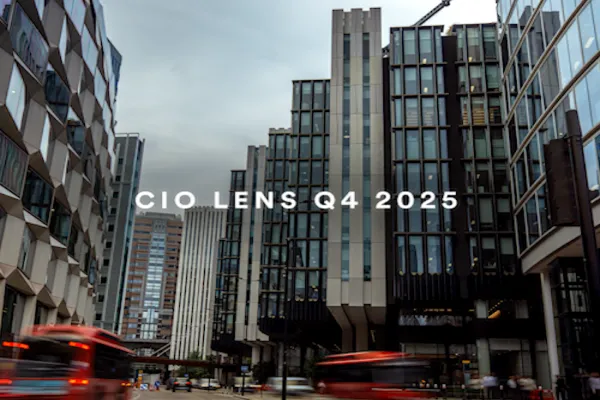October 1929. October 1987. October 2008. October 2014?
Mark Twain wrote that October was a “peculiarly dangerous month to speculate in stocks. The others are July, January, September, April, November, May, March, June, December, August and February.” Wise words, man.
Earlier this week I was in Toronto at a conference. Among the 30-plus Giants in the room, a common question was repeated: “When’s the big correction going to hit?” Right now, public equity markets are at highs, while interest rates are at 30-year lows. Central banks have sworn off their quantitative easing habit and rate hikes are coming. After living with free money for so long, most investors realize it’s time to face the music. The big question is when. And the uncertainty about the timing of a correction has clearly flustered investors.
Investors don’t like this kind of uncertainty. Unlike risk, uncertainty is, by definition, immeasurable. It’s the “unknown unknown,” as opposed to a “known unknown.” The latter, a risk, can usually be ascribed a probability and then priced. Uncertainty is not something you can price — though many investors have tried to manage it through tail-risk hedging. And because capital tends to flee uncertain environments, governments and companies try to minimize the perception of uncertainty through guarantees, insurance and special rights.
Anyway, by the end of the conference I had a clear question ringing in my head: What is the best way for investors to deal with uncertainty? Is it to try to remove it entirely through extensive — and expensive — hedging or insurance? Perhaps. Or is it something that’s best managed by developing a robust investment organization? Definitely.
I think the reason investors worry about uncertainty stems from the fact that our investment organizations are not up to the job of managing assets in dynamic and volatile markets. Many institutional investors suffer from a sort of legacy cost from inherited governance structures. Their funds simply were not designed for the complex world of today — that is, set it and forget it. In addition, the risk tools and models appear unable to adequately identify financial vulnerabilities, let alone show how shocks propagate. Finally, a layer of financial abstraction also sits between investors and their assets, which manifests in the form of financial products and services. Relationships between investors and corporations have been replaced by relationships between investors and products.
In short, many investors feel that they are ill equipped to manage and understand the dynamic and unpredictable markets. As such, their fear of uncertainty isn’t really about a fear of what’s coming next in the market. It’s of how their organizations will respond to what’s coming next.
As such, some view the investment climate as one of the most challenging in generations; one made even more difficult by the large pools of capital scouring the earth for assets.
But not me. For millennia, investors have found creative ways to deal with uncertainty. All the way back to Roman times and the nauticum foenus, or “sea loan,” investors have been overcoming unpredictable environments to achieve objectives. The key then, as it is now, was to develop organizational integrity to motivate and equip all parties to succeed. It’s with this idea in mind that I wanted to provide some of my thinking on how long-term investors can best prepare themselves and their organizations for the inevitable opportunities in uncertain times. Here we go:
• Know Thy Fund: Dealing with uncertainty demands investors have clarity over their own operations and characteristics. It may seem obvious, but you’d be surprised how many organizations do not know the risks they are taking, the fees they are paying, or even the bets they are making. The first step in preparing for uncertainty, then, is to do an audit of strengths and weaknesses. The idea is to catalogue all of the organizational capabilities into a sort of governance budget so that a risk budget can be matched to it. And, when done properly, long-term investors can capture structural alpha that isn’t available to anybody else.
• Know Thy Portfolio: Next, the investor should do an in-depth analysis of its portfolio so it can truly know what it owns. It’s important to avoid thinking in terms of markets and stocks, but instead to focus on companies and their cash flows. You need to be able to assess how underlying companies will handle uncertainties. Investors have to know where their portfolio is today to have any clue on where they should take it tomorrow. In order to have this perspective — which I attribute to really professional institutions — investment firms need a strong internal data infrastructure.
• Phased Entry: Developing a portfolio for uncertain times often means positioning the portfolio for a maximization of returns in both negative and positive environments. Managing the upside is relatively easy. But it’s dirty work maximizing value on the downside. Often dysfunctional teams need to be separated from hairy assets. Interestingly, research shows that the single best thing an investor can do to protect the downside is to delay closing the deal. Putting off an investment provides considerable option value. If you make an investment today, you lose the opportunity to invest in the same project tomorrow. The idea here is to use real option theory to mitigate uncertainty over time.
• Plan and Prepare: It’s great to have downside protection, but a good investor will also have to act quickly. While I like the idea of being last money in a deal to maximize option value, doing this doesn’t necessarily come without consequences in an uncertain environment. Investors that hang on to an option value by sitting on the fence might not realize that the real value at stake is contingent on a signal. This signal, which needs to be sent to the marketplace, is one that demonstrates whether or not an asset is still investible. In other words, it could be your responsibility to send that signal and be the first to invest. This, in turn, means preparing for uncertain environments by developing the ability to move tactically. Success here, then, is about flexibility and durability in an uncertain environment, which means preparing an organization to move. This may require adopting innovative risk strategies, such as agent-based risk models or it may mean developing a detailed understanding of the needs of a portfolio company or counterparty. It may also mean long sessions educating investor boards.
• Know Thy Self: What happens when you get all of these factors humming in unison? Do you end up with a rational actor in an irrational environment? No, you don’t. You wouldn’t want that, as markets can stay irrational for longer than people can stay rational. When navigating complexity and volatility, there are fateful decisions that demand fast responses. Research shows that trust, intuition and even emotion are strong enough forces to manage through uncertainty and, when combined, to mobilize experience-based knowledge in an effective and timely manner. This is similar to some of the edge work concepts I’ve discussed in the past. Certain people have an inherent ability to respond to dangerous and challenging situations with little time. The whole point of being ready for uncertain environments is that you don’t need a script for what to do. You’ve got the inputs so dialed in to make the right investment decision that you can let the organization do its thing. Note here as well that building internal expertise means allowing internal teams to make mistakes; that’s part of investing. As such, the investor has to have an internal culture that is not punitive.
Warren Buffett has been quoted as saying, “Uncertainty actually is the friend of the buyer of long-term values.” I agree. And with the right organizational buy-in and alignment, a long-term investor can use uncertainty to generate high returns. So the looming correction isn’t something to fear. It may serve as a wonderful buying opportunity.






